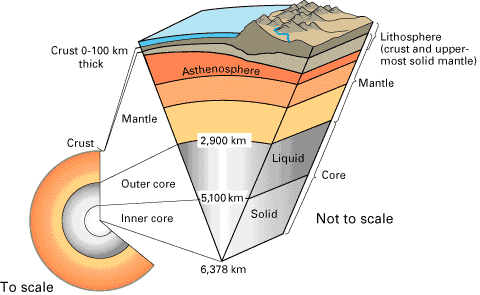|
The Earth's Structure
 | | Earth's cross section. Figure source: http://pubs.usgs.gov/publications/text/inside.html |
The Earth's diameter is about 12,750 kilometers. The inside of the Earth is made up of three main layers, which are the crust, mantle and core. Compared to the mantle, the crust is very thin and brittle. The thickness of the crust averages 5-100 kilometers and can be cracked (i.e. through faulting) and deformed (i.e. through folding). The mantle is located below the crust and above the core of the Earth. The mantle layer of rock is approximately 2,900 kilometers thick. Since temperature and pressure increase with depth in the Earth, the mantle is hotter, denser and is more malleable and ductile than the crust. The center of the Earth is called the core. The core is twice as dense as the mantle because it is made of metallic iron and nickel, rather than rock. The core is actually made up of two layers, one liquid layer (2,200 km thick) and a solid inner core (1,250 km). The outer core spinning at a different rate than the inner core creates the Earth's magnetic field.
|







